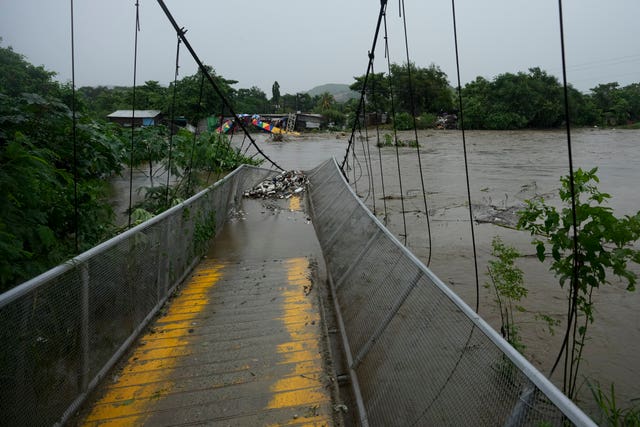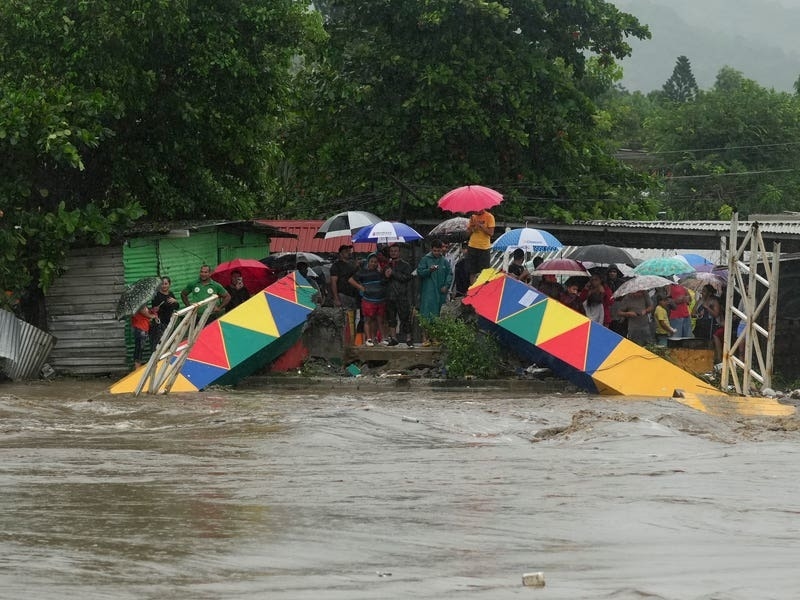Tropical Storm Sara stalled over Honduras on Saturday, drenching the northern coast of the Central American nation and swelling rivers.
The area could see life-threatening flash flooding and mudslides through the weekend, according to the Miami-based National Hurricane Centre.
Sustained rain fell overnight and continued into the morning in the city of San Pedro Sula, where there were no immediate signs of serious flooding.

Standing on a riverbank, Carlos Canelas, 48, said many residents including his mother had ignored official warnings to evacuate the Flor de Cuba neighbourhood of San Pedro Sula.
By Saturday morning, the 77-year-old woman was cut off from the rest of the city because the river crossing collapsed and she remained at home with her 35-year-old special-needs son.
The weather system made landfall late on Thursday about 105 miles (165 kilometres) west-northwest of Cabo Gracias a Dios, on the Honduras-Nicaragua border.
The Hurricane Centre expects the storm will move near the Bay Islands of Honduras on Saturday before approaching Belize.
Sara is then expected to turn northwesterly towards Mexico’s Yucatan Peninsula, though forecasters said it probably will not re-emerge into the Gulf after crossing the Yucatan.
The storm, however, did not stop a Concacaf Nations League match on Friday in San Pedro Sula. Under heavy rain, Mexico lost 2-0 at Honduras.
In November 2020, Eta and Iota passed through Honduras after initially making landfall in Nicaragua as powerful Category 4 hurricanes.

The Hurricane Centre on Saturday said storm surge could raise water levels along Honduras’s immediate northern coast areas by as much as three feet (one metre) above normal.
“Near the coast, the surge will be accompanied by large and destructive waves,” according to the centre.
“A storm surge could raise water levels by as much as one to three feet above ground level near and to the north of where the centre of Sara crosses the coast of Belize.”






